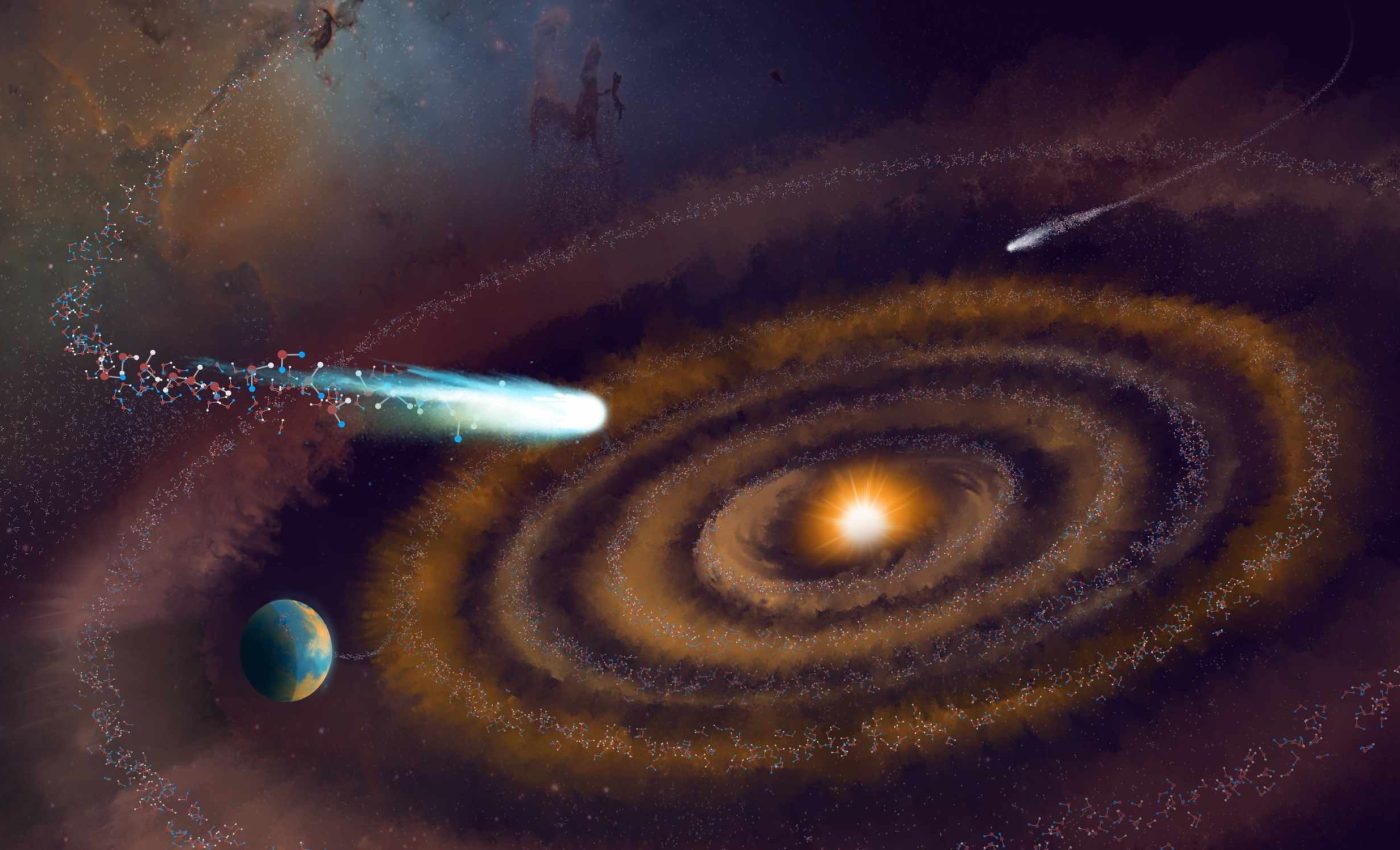
'Heavy water' older than the Sun discovered in a planetary system creating new worlds
Astronomers report the first detection of water with two deuterium atoms replacing hydrogen, also known as doubly-deuterated water (D₂O, or “heavy water”), in a planet-forming disk around V883 Ori, a young star.
The signal points to water that formed before the star and survived into the disk in a young system that is about 1,300 light years away.
Heavy water on V883 Ori
Water sits in a planet-forming disk, which is a gas and dust ring around a young star. There it becomes part of rocks, ices, and early comets.
The team reported that the heavy water observed in the planet-forming disk is clearly older than the star itself, having formed during the earliest stages of star and planet development.
This result anchors a simple idea. Some planetary water is inherited rather than made afresh inside disks.
The team tracked ratios of water variants, known as isotopologues, around V883 Ori. These are molecules with the same chemical formula but containing different isotopes.
Water (H2O) and heavy water (D2O) are isotopologues. D2O is a useful and decisive tracer of where and when water formed.
In this disk, only a tiny fraction of the water contains extra heavy atoms, showing it formed in extremely cold conditions. Earlier studies of the same system had already spotted other forms of water and mapped where warmer water sits in the disk.
That mapping sharpened the case for inheritance. The new D2O line strengthens it further by showing a pattern that is hard to rebuild after ice gets destroyed and reformed.
How D2O survived on V883 Ori
Models show that disk chemistry alone struggles to rebuild the observed levels of deuterated water. This favors the idea that it is derived from the survival of ancient ice.
Those models argue that low-temperature reactions in space set the deuterium content long before stars assemble. That imprint can ride into disks on dust-coated ice.
The outbursting nature of V883 Ori heated part of the disk and released buried ice into gas. That gave radio telescopes a clear path to measure water’s chemical fingerprint without guessing what hides in frozen grains.
As the system cools again, water can refreeze farther out. The preserved chemistry then tags the material that later builds comets and the rocky pieces that seed planets.
Links to comets and planets
Comets hold some of the oldest ice in the Solar System and can deliver water to forming planets.
The European Space Agency’s (ESA) Rosetta spacecraft, which closely studied comet 67P, found that its water had a much higher level of heavy hydrogen than Earth’s, showing that comet water can vary a lot in composition.
That diversity makes inheritance tests useful. If a disk’s D2O and related ratios resemble those in protostars and some comets, it suggests a shared origin in cold, interstellar ice.
Until now, scientists were uncertain whether most of the water found in comets and planets formed recently in young disks, like V883 Ori, or came from much older, interstellar clouds.
The new evidence shows that much of it likely originated long before the star itself, and has been preserved from the earliest, coldest stages of space.
The new detection links clouds, disks, and icy bodies with one chemical thread. It suggests that many young planets may inherit water that is far older than themselves.
What comes next
Future campaigns can map D2O across more disks to test how common inheritance really is. They can also compare inner and outer regions to see where ice survives and where chemistry resets.
Astronomers will watch how the snow line, the radius where water stays frozen, shifts as young stars brighten and fade. Those shifts affect what kinds of planets grow where, and how much water they can lock in.
Pairing these water maps with dust rings and gaps will tie chemistry to the structures where planets assemble. That cross-check can tell us whether water-rich zones line up with planet-forming regions.
Better sensitivity will also catch fainter lines from other molecules that form with water. Together, they will sketch a fuller chemical history, from interstellar clouds to newborn worlds.
Heavy water, V883 Ori, and next steps
Water is central to habitability for familiar reasons. It also shapes how solids stick, grow, and migrate as disks build planets.
The idea that disks inherit ancient water raises the odds that many systems start wet. It does not guarantee ocean planets, but it means the raw ingredient arrives early and often.
For Earth’s story, that matters deeply. If interstellar ice seeded our disk, then the seeds for water, and eventually life itself, were already in place from the very beginning of our planet’s formation.
For exoplanets, it sets a hopeful baseline. Where icy grains survive, water should be available to young worlds that can hold onto it.
The study is published in the journal Nature Astronomy.
Image credit: NSF/AUI/NSF NRAO/P. Vosteen, B. Saxton.
—–
Like what you read? Subscribe to our newsletter for engaging articles, exclusive content, and the latest updates.
Check us out on EarthSnap, a free app brought to you by Eric Ralls and Earth.com.
—–













